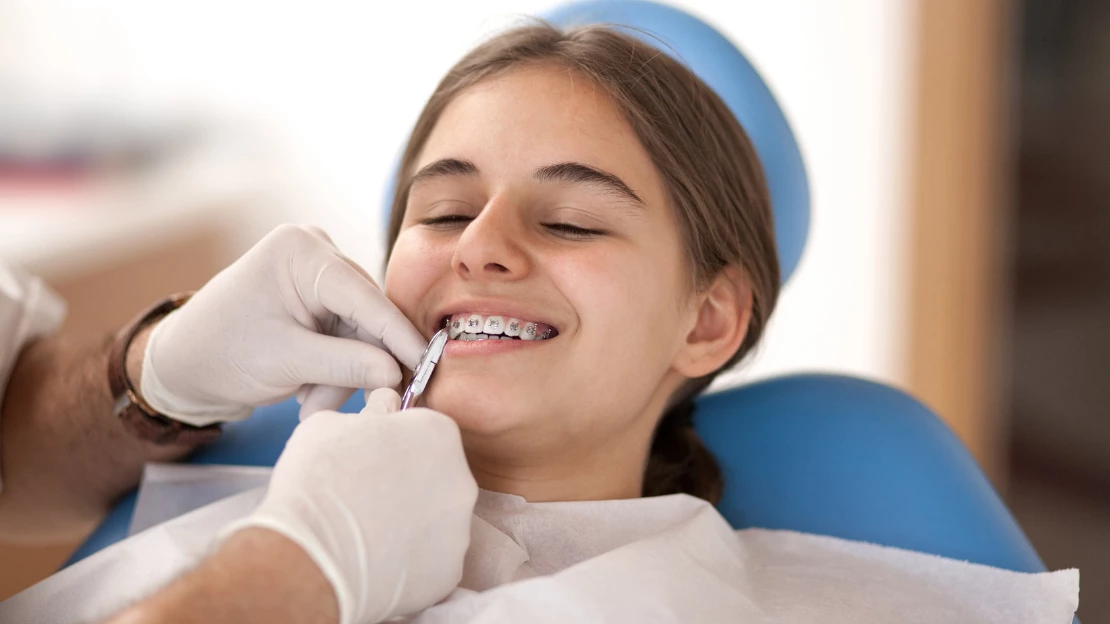The 5-Minute Rule for Legacy Orthodontics
The 5-Minute Rule for Legacy Orthodontics
Blog Article
How Legacy Orthodontics can Save You Time, Stress, and Money.
Table of ContentsLegacy Orthodontics - An Overview5 Simple Techniques For Legacy OrthodonticsOur Legacy Orthodontics PDFsAll about Legacy OrthodonticsThe Only Guide for Legacy Orthodontics
In addition, we supply adjustable therapy timetables, versatile repayment options and an enjoyable, satisfying experience.An orthodontist is a dental practitioner educated to diagnose, avoid, and treat teeth and jaw abnormalities. Orthodontists function with people of all ages, from kids to grownups.
Malocclusion, or misaligned teeth, can result in dental concerns, consisting of dental caries, periodontal disease, and challenging or agonizing chewing. Not everyone is birthed with straight teeth. If you have a poor bite or huge areas between your teeth, you might wish to speak with a dental professional focusing on orthodontic treatment.
3 Easy Facts About Legacy Orthodontics Explained
( Picture Debt: DigitalVision/Getty Images) Orthodontists use repaired and detachable dental devices, like braces, retainers, and bands, to change the setting of teeth in your mouth. Orthodontic therapy is for dental problems, including: Uneven teethBite issues, like an overbite or an underbiteCrowded teeth or teeth that are as well far apartJaw misalignmentThe goal of orthodontic treatment is to enhance your bite.
A healthy bite ensures you can consume, eat, and speak properly. While you may think about orthodontists as generally for youngsters or teens who require dental braces, they can deal with dental troubles at any type of age. Orthodontists attend college, dental institution, and orthodontic institution. After college graduation, they spend 2 or 3 years in an orthodontic residency program.
All orthodontists are dentists, yet not all dental practitioners are orthodontists. Orthodontic residency programs offer extensive, concentrated guideline for oral experts. They concentrate on 2 locations: Just how to properly and safely move teeth Exactly how to properly direct development in the teeth, jaw, and faceOnce an orthodontist has actually completed training, they have the option to come to be board accredited.
Indicators on Legacy Orthodontics You Need To Know
Malocclusion leads to tooth congestion, an askew jaw, or irregular bite patterns. Malocclusion is usually treated with: Your orthodontist connects steel, ceramic, or plastic square bonds to your teeth.
If you have just minor malocclusion, you might be able to use clear dental braces, called aligners, as opposed to standard braces (https://legacyortho.edublogs.org/2024/09/30/transform-your-smile-with-a-leesburg-orthodontist/). Some people require a headgear to assist move teeth right into line with stress from outside the mouth. After braces or aligners, you'll need to use a retainer. A retainer is a personalized device that maintains your teeth in position.
They're usually made use of on youngsters. They can produce added room in the mouth without needing to pull teeth. If you have a severe underbite or overbite, you could require orthognathic surgical treatment (likewise called orthodontic surgical treatment) to lengthen or shorten your jaw. Orthodontists utilize cables, surgical screws, or plates to sustain your jaw bone.
You may require to see an orthodontist if you have: Crowding or otherwise sufficient area for all of your teethOverbite, when your upper teeth come over your bottom teethUnderbite, when your bottom teeth are too far forwardSpacing or issues with gapsCrossbite, which is when your upper teeth fit behind your base teeth when your mouth is closedOpen bite or an upright void between your front base and top teethMisplaced midline, when the center of your bottom and upper teeth don't align Fixing a dental malocclusion can: Make biting, eating, and talking easierImprove the proportion of our face and your general appearanceEase discomfort from temporomandibular joint conditionsSeparate your teeth and make them simpler to clean up, helping avoid dental cavity or tooth cavities It's often a dental practitioner that initially notices misaligned teeth during a routine examination.
An Unbiased View of Legacy Orthodontics

During your very first orthodontic assessment, you'll likely have: A dental examPhotos taken of your face and smileDental X-raysPanoramic (360 level) X-rays of your face and headImpressions to develop molds of your teethThese examinations will certainly assist your orthodontist recognize how to continue with your treatment. leesburg orthodontics. An orthodontist is a dental expert that's had training to treat your teeth special info and jaw
Orthodontists may do surgical treatment, exams,X-rays,and more to help you acquire an extra comfortable, much healthier smile. An orthodontist is concentrated on your bite, so something like a broken tooth would be taken care of by a dental expert. Orthodontists are dental experts yet not all dental experts are orthodontists. Orthodontists are focused on your bite, or the way your teeth fit together, and the straightness of your teeth.
Ever asked yourself exactly how celebs always appear to have flawlessly lined up teeth? Orthodontists are oral experts who concentrate on fixing irregularities in the teeth and jaws.
Legacy Orthodontics - Questions

While braces are the most frequently recognized orthodontic therapy, orthodontists have a diverse toolkit at their disposal. The particular strategy chosen depends on the severity of the situation, the person's age, and private choices. These reliable dental braces utilize a system of brackets adhered to the teeth and linked by cables.
Clear aligners, like Invisalign, are a preferred choice for individuals looking for a much more very discreet therapy option. These detachable trays are personalized to progressively shift the teeth's setting. Headgear may be made use of in conjunction with braces or aligners to use extra targeted forces, particularly for dealing with jaw disparities. In instances of slim jaws, palatal expanders can be utilized to produce room for correct tooth placement.
Report this page